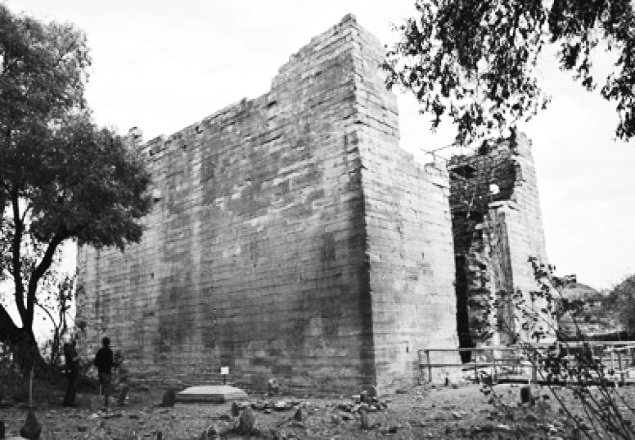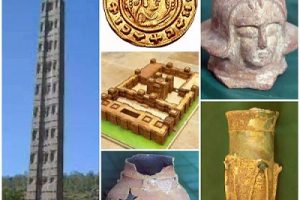
The Aksumite Empire is one of the four ancient mightiest civilizations, which has equal status with then Persia, Greek and China. The Kingdom’s major source of wealth was trade that had been undertaking through the Red Sea and Indian Ocean route. The port of Aulis, currently found in Eritrea had played an important role in creating wealth to the Kingdom. Beyond trade, the Aksumite Empire had been practicing agriculture. Several agricultural tools and heritages have been found in Aksum through archeological excavations to witness the agrarian culture of the Akusmite society.
According to the magazine published by Tigray Culture and Tourism Bureau, the Aksumite society used to harvest wheat, barley and other various grains during the 5th Millennium BC. This date denotes that agriculture was started in Aksum before it was started in Egypt and South Arabia. Indigenous crops such as teff and Abyssinian oat denote that Ethiopia is one of the ancient agrarian countries in the planet.
These crops had been harvested for millennia in the northern parts of Ethiopia. That is why most historians believe that agriculture was the foundation for trade and industrialization since that time. This shows how much important sector was for the economy of the Kingdom. The magnificent obelisks, palaces, coins and tombs give detail information about the strength of the Kingdom.
Archaeological, geo-archaeological, etnobotani and ethnographic documents which were found in Aksum show that agriculture had been practiced in a place known as Debre Makida. Agricultural tools have been found in the area. Archeologists also discovered water reservoir that was used for irrigation works. The dams which are found in Qohaito (Eritrea) and Mayshum, (Tigray, Ethiopia) were used for water bank purposes. However, are these dams used for drinking or agriculture is not yet verified.
In addition to farming, the Kingdom had a custom of animal husbandry. Ancient manuscripts, coins and other artifacts which denote animal rearing were found through archaeological excavations in Aksum and its suburban areas.
Archaeological site that was discovered in a place known as Geza Ugumay contains King Ezana’s stone inscription. The inscription comprises the king’s diary about his expedition to the Beja people who are found in the present-day Sudan and Eritrea. In that document, the king wrote that he had huge grain warehouses which were used to amass rations. The warehouses have been found by excavations. Besides, heritages being unearthed in Bete Giorgis show that Aksum and its surroundings was fertile agricultural land. However, due to extensive grazing and cultivation, it has been degraded and losing its soil fertility. Thus, researchers realized the problem soil erosion was started since that time.
With expansion of agriculture, the number of population started to increase. Hence, the settlements extended to the present-day town of Aksum. Aksumite kings established their permanent capital in Aksum to control the strategic Red Sea route, North Africa and parts of South Arabia. Agriculture has played vital role in the development of Aksumite urban civilization. Not only Aksum, the ancient town of Yeha, 20 km from Aksum was founded around fertile soil.
Archaeological documents have been discovered that the Aksumite and preAksumite societies used to produce grains such as teff, wheat and barley.
Regarding environmental history of Aksum, the area was covered by thick forest of different types. There were also various types of wild animals. Nevertheless, the deforested it for building homes, for agricultural materials and firewood and the animals had been disappeared following the depletion of their habitat.
Besides, ethnographic discoveries which were found in places like Sefiho, Adi Tsehafi and Hatsebo have also confirmed that the Aksumite Kingdom was known for its agricultural activities. Huge amount of agricultural produce was used to be harvested without any fertilizer. This shows how much fertile the soil was. In addition to this, 4th century pottery pictures and coins of emperors that depict ploughing with oxen were found in Aksum to witness the agrarian culture of Aksum.
Generally speaking agriculture was the backbone of the Aksumite Empire which helped it to become one of the mightiest civilizations of the ancient times. It has played undisputable role for transforming the economy to trade sector. Thus, modern Ethiopia should take a lesson that agriculture would be ladder for trade and industrialization. That is why the nation has given unfathomable attention for the sector.
The Ethiopian herald June 14,2020
BY TSEGAY HAGOS




